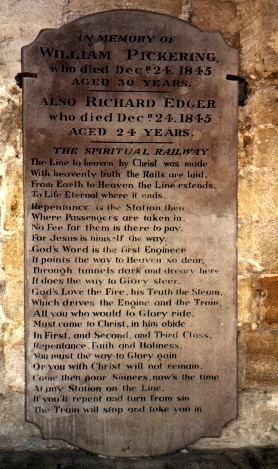Formed 1840 Jurisdiction Great Britain | Dissolved 1 May 2009 | |
 | ||
Superseding agency Office of Rail and Road Headquarters 1 Kemble Street, London, WC2B 4AN Non-ministerial government department executive Ian Prosser, HM Chief Inspector of Railways | ||
Established in 1840, HM Railway Inspectorate (HMRI: Her Majesty's Railway Inspectorate) is the British organisation responsible for overseeing safety on Britain's railways and tramways. Previously a separate non-departmental public body it was, from 1990 to April 2006, part of the Health and Safety Executive, then was transferred to the Office of Rail and Road and finally ceased to exist in May 2009 when it was renamed the Safety Directorate. However, in the Summer of 2015 its name has been re-established as the safety arm of ORR. August 2015 being the 175th anniversary of its founding.
Contents
History
The body originated in 1840, as a result of the Railway Regulation Act 1840, when Inspecting Officers of Railways were first appointed by the Board of Trade (BoT). Britain's railways at that time were large monopolistic private companies, so the BoT was concerned with competition and the safety of the public. The Railway Inspectorate was formed to investigate accidents reported by the companies to the Board of Trade, and report their findings to Parliament. They were also tasked with inspecting new lines, and commenting on their suitability for carrying passenger traffic. Their reports were published and so made available to everyone. Their first investigation concerned the derailment of a train caused by the fall of a large casting from a wagon on a passenger train. The Howden rail crash on 7 August 1840 killed four passengers. Other important investigations included the public inquiries into the Shipton-on-Cherwell train crash in 1874, and the Tay Bridge disaster of 1879. The then Chief Inspector, William Yolland chaired the first, and was a member of the board in the second.
The Chief Inspecting Officer from 1916 to 1929 was Colonel John Wallace Pringle, responsible for investigating many accidents. It was during his tenure, in 1919, that the office became part of the newly created Ministry of Transport. Until the late 1960s HMRI's Inspecting Officers were all recruited from the Corps of Royal Engineers; as the Corps ran the UK's military railway system and they would be very familiar with the Railway Rule Book. The last Chief Inspecting Officer with a Royal Engineers background, Major Rose, retired in 1988 and he was replaced by an appointee from the Health and Safety Executive (HSE). Since then, Inspecting Officers have been recruited from the HSE or as mid-career railway employees from the former British Rail.
List of Chief Inspecting Officers / HM Chief Inspector of Railways
Original twin functions of the HMRI
The function of HMRI was to inspect and approve all new (or modified) railway works and to investigate railway accidents; and the two activities were carried out by separate parts of the HMRI.
Accident investigations have tended to be held in public, and the findings were published as HMRI Railway Accident Reports. These investigations were inquisitorial, in that their aim was to determine the causes behind the accident and to make recommendations to avoid re-occurrence. The reports were widely circulated around the railway industry, and among the travelling public.
Many of their reports are available as facsimiles of the originals at the railways archive.
Recent history
The HMRI became part of the Department of Transport and remained so until 1990, when it was transferred to the Health and Safety Executive (HSE). About this time HMRI expanded its scope and recruited additional staff, Railway Employment Officers. It was their job to monitor the workplace safety and health of railway employees.
After the move to the HSE, (newsworthy) train crash investigations tended to be held as public inquiries presided over by a High Court Judge; and the findings published. These inquiries tended to be more adversarial; with the aim of identifying the guilty parties. In some cases criminal prosecution of these parties has occurred in parallel with the public inquiry, delaying the Inquiry until the criminal prosecutions have been completed.
The transfer to the HSE was unpopular with many in the industry, and as part of its rail review in 2004 the government announced that the Railway Inspectorate would be transferred from the HSE to merge with the Office of Rail Regulation (now the Office of Rail and Road). The transfer took place on 2 April 2006.
The Inspectorate oversaw both operational safety and the initial integrity of new and modified works. As a result of the legislative change, which transferred them to the Office of Rail Regulation, the scope of HMRI enforcement no longer covered guided bus, trolleybus and most cable-hauled transport systems. In May 2009 the legal entity known as "HM Railway Inspectorate" ceased to exist when a single rail regulatory body covering both safety and economic issues, the Safety Directorate, was created, but the 180 individual inspectors will continue to be known as Her Majesty's Railway Inspectors.
